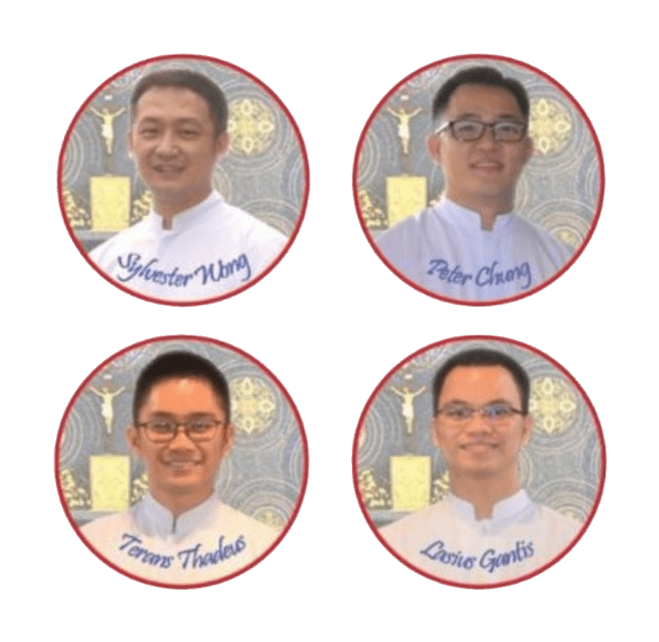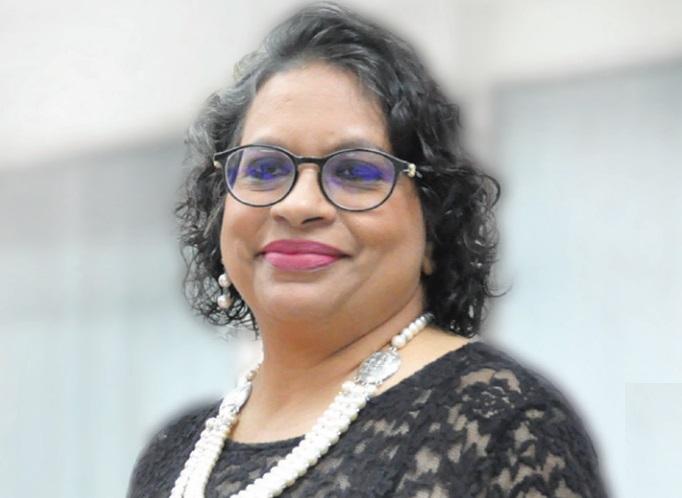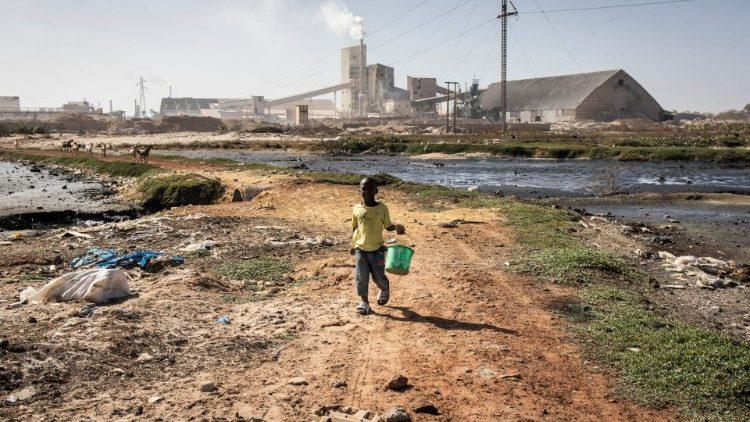Mill Hill Missionaries mark 150 years of foundation

This year is the 150th anniversary of the founding of Mill Hill. This was marked in Kuching by a Thanksgiving Mass on 2 May 2016 in the Cathedral, but as there is no Mill Hill Missionary left in Sabah, there would be no particular event to mark it there.
Fr Terry Burke, Mill Hill Regional Representative for Malaysia has undertaken to provide a short history of Mill Hill – its founding and its entrance and work in East Malaysia, spread out in three parts over the rest of the year for the appreciation of our readers and thanksgiving to God for the gift of the Mill Hill Missionaries to our region.
- The Founding of Mill Hill
One snowy February day, a hundred and fifty years ago, in England, a train pulled into Mill Hill railway station in north London and two men got out. One was a Catholic priest, Father Herbert Vaughan – a man with a dream of founding a College to send missionary priests to those who had never heard the Gospel – and the other man was a student who wanted to be a missionary priest. Together, they loaded their luggage onto a wooden cart and began to push it up the nearby hill to a place called Holcombe House, which Fr Vaughan had managed to buy in order to fulfil his dream. So began St Joseph’s Missionary Society, which came to be also known as “The Mill Hill Missionaries.”
Many people thought Fr Vaughan was slightly crazy for having such a dream, for Britain, at that time, was mostly Protestant, and had emerged, only forty years previously, from 200 years of persecution, during which Catholics were penalised for their Faith. People asked him, “How can you even think of sending priests abroad when we have such a need of them here in Britain?” He answered, prophetically, “Until Britain is willing to share the priests it has with those who need to hear the Gospel, it will never have enough priests of its own!” Not for the first time, God used those, whom others thought slightly crazy, to do his Will, and fifteen years after that snowy climb, the first four Mill Hill Missionaries arrived in Kuching to preach the Gospel in what is now East Malaysia – and the strong vibrant Catholic communities we have today in Sabah and Sarawak were built on the love and service given by those four men and the many other Mill Hill Missionaries, who were to follow them to these shores – even until today – living out the dream of Herbert Vaughan.
Herbert Vaughan was the eldest son of an old Catholic family on the English/Welsh border; his family had remained Catholic through the long years of persecution. His mother, Eliza, a convert to the Catholic Faith, used to pray for an hour each day before the Blessed Sacrament that God would grant her children religious vocations – and of the 13 of them, six sons became priests and four daughters became nuns. Maybe it was here, in his mother’s love for the Lord and her concern for the spread of the Church, that Herbert’s desire to found a missionary college was born – we do not know – but we do know that he was greatly influenced by his mother’s piety and also that, after he became a priest, he was encouraged to follow his missionary venture by receiving the backing of both his bishop and Pope Pius IX.
One great problem, however, remained: money! Where would he get the money to build his college, for while Britain was a wealthy country, the Catholics of Britain were, in general, very poor, many being poor Irish immigrants, who had escaped from the potato famine in Ireland. Moreover, the few wealthy British Catholic families that there were, were being asked to help support many other projects of the resurgent Catholic Church in Britain, so Fr Vaughan had to turn elsewhere to look for money. He decided to take a fundraising tour of California and South America, which were very Catholic areas –and even Pope Pius IX said he would pray for the success of his tour, but, he added, he doubted that he would have much success. However, the Pope’s prediction proved to be wrong and Herbert Vaughan was successful and collected enough money to buy Holcombe House at Mill Hill, where he and his companion finally arrived on that snowy day in February 150 years ago.
From the beginning, Fr Vaughan had entrusted his dreams of a missionary college to the patronage of St Joseph, the quiet but caring husband of Our Lady, and it was to St Joseph, that he turned, when difficulties arose in buying Holcombe House. One of his friends had seen the house and told him about it – saying that it was in a good position and also included enough land to build a college, should the number of missionary vocations eventually warrant it. There was only one problem – the owner would not sell it and certainly not to a Catholic priest who wanted to build a missionary seminary. Fr Vaughan tried to talk to the man several times, but he always refused to sell and eventually Fr Vaughan had the door closed in his face. So, he did what has become an abiding habit among Mill Hill men – when you have a problem, you entrust it to St Joseph.
He bought a small statue of St Joseph, wrapped it up and took it with him on his next visit to Holcombe House. It was the owner himself, who answered the door, but before he could say anything, Fr Vaughan asked if he could leave his small parcel in the small open cupboard near the door, while he visited one or two people in the area – and before the man could refuse, he placed his parcel there and left. A few days later, he received a letter from the owner saying that he had changed his mind and that Fr Vaughan could buy the house. That small statue of St Joseph has had a place of honour in Mill Hill ever since that day – reminding Mill Hill men what a powerful, but quietly working Patron St Joseph is!
That, however, was not the end of the Holcombe House difficulties! Fr Vaughan had enough money to buy the house but not to furnish it and, as he was later to write, “We began in real poverty – six mugs, or rather college pudding basins, for our tea, and we borrowed a few chairs and plates. We started that first night with reading at supper: ‘The life of St Joseph’” This frugality, however, was not only because of the lack of money, but also from Fr Vaughan’s idealism – he wanted priests, who would willingly embrace a life of poverty, an insight which was to prepare the Mill Hill men sent to the Borneo Mission, for there was little of anything for the first fifty or sixty years of missionary work here and the life was very tough.
This way of living at Holcombe House, however, was not a healthy lifestyle, for as one visitor to the budding missionary college reported: “I found them eating meals of tinned meat in order to save money on cooking”. Something needed to be done, so the Lord took a hand and sent a wealthy Catholic convert, Lady Herbert of Lea to visit Fr Vaughan at Holcombe House, where she found, as one account says, that the only room that was furnished was the chapel – Fr Vaughan and his students were sleeping on the floor. Lady Herbert decided to adopt the college and brought about many changes in the domestic arrangements, which, while still simple, were a more healthy way of living. Because of this and many other generous acts, she became known as “The Mother of the Mill” and, at her death many years later, was buried in the College cemetery.
The number of students rose and it soon became obvious that Holcombe House was not large enough to accommodate them, so it was decided to build St Joseph’s College on the adjacent Mill field, a few hundred yards from Holcombe House. This new college building, though not fully completed, was opened on 1 March 1871 and thirty-four students took up residence there. From the doors of this college, the Motherhouse of the Mill Hill Missionaries, hundreds of missionary priests and brothers would go out to countries throughout the world to preach the Gospel and amongst these men were all the Mill Hill Missionaries, except the more recent ones, who have worked in Sarawak and Sabah over the last one hundred and thirty five years.
The next part of the story of the Mill Hill Missionaries will tell of the first Missions entrusted to Mill Hill, including the story of how they arrived in Borneo.



